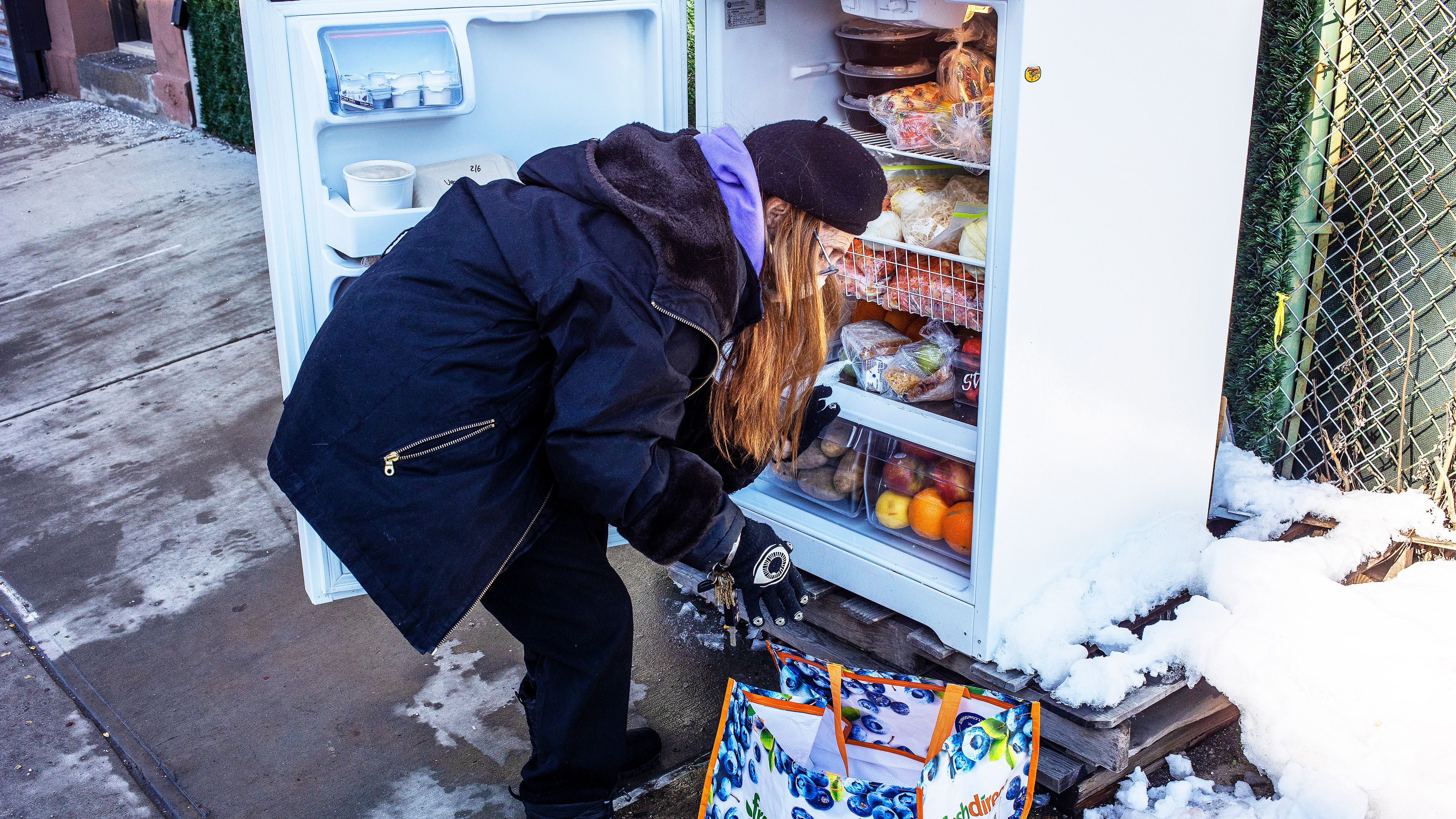Mutual Aid Is Not a Trend
It’s about solidarity, not charity, and a lot of people you know are doing it.


“Mutual aid has existed as long as people have been around,” says Mariame Kaba, an educator and organizer in New York City who, in March 2020, collaborated with U.S. representative Alexandria Ocasio-Cortez on a mutual-aid workshop and the release of a COVID-19 mutual-aid digital tool kit. But there’s a reason you’ve been seeing pictures of people filling a community refrigerator and videos of folks handing out clothing on the street accompanied by #mutualaid all over your social feeds lately. “We’re dealing with a disaster of massive proportions, [COVID-19], that most people have never lived through in their lifetime,” Kaba says. “When you are in this kind of a situation, you figure out ways to relate to other people that allow you to actually survive. That’s why people are paying attention to it; they have no choice.”
It’s important to be clear on what mutual aid really is (it can loosely be described as caring for others while working to improve our world)—and isn’t (charity). This is more than the giving or taking of goods or services; it’s a relationship that you’re building. “It’s called mutual aid, so it’s not just the [assistance] that matters,” says Kaba, “it’s the reciprocity of it—that you’re in a community with other people.” From that association, you build connections in a way that you don’t with a singular feel-good actions. (Not that there’s anything wrong with those…)
It’s to create a new society; it’s to create a new community.
“It’s not just ‘You do one thing for me, and then I never talk to you again,’” continues Kaba. “It’s to create a new society; it’s to create a new community.” The idea is that once people are interacting in this way, they see more and more ways to work together to help one another, leading to greater transformation.
The key to understanding it is a 1902 essay collection by Peter Kropotkin. In Mutual Aid: A Factor of Evolution, the Russian anarchist philosopher looked at mutually beneficial cooperation in human and animal societies, sort of the opposite of social Darwinism. For a deeper understanding of the modern version, try the primer Mutual Aid: Building Solidarity During This Crisis (and the Next), by Dean Spade (Verso, 2020). Spade outlines how the systems we currently have in place are not set up to meet people’s needs—as we’ve seen highlighted by last year’s major global disruption.
But it’s not only worth practicing during a pandemic. Mutual aid is for when wealth is concentrated in one layer of society, when the health-care system is flawed, and when people can work full-time but still be unable to pull their families out of poverty. In other words, mutual aid is timely—and timeless.
RELATED STORY

Get exclusive access to fashion and beauty trends, hot-off-the-press celebrity news, and more.
Maria Ricapito is a writer who lives in the Hudson Valley.
